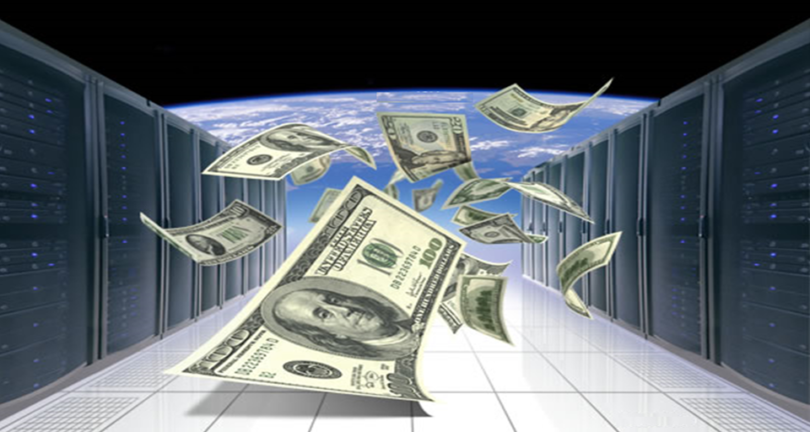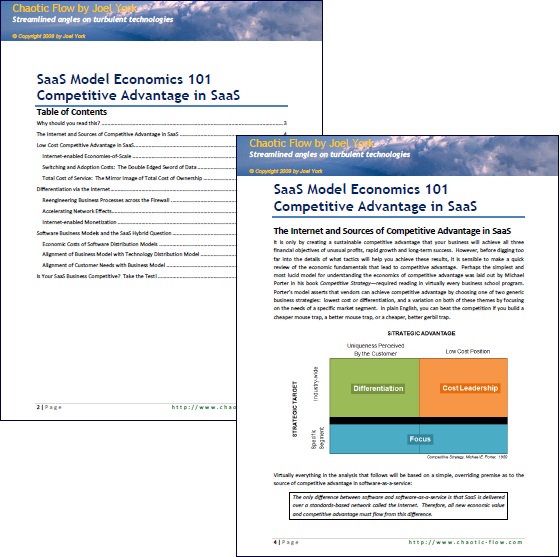If your SaaS business is confronted with issues such as the following:
- Why is my SaaS business losing money?
- How do I grow my SaaS business faster?
- How does a SaaS vendor create a long term competitive advantage?
- When does it make sense to take a “SaaS hybrid†approach?
- Will SaaS displace on-premise software entirely?
- Are there applications for which the SaaS is simply not the right choice?
Then, there is a good chance you will find the principles laid out in this e-book on how to develop competitive advantage in SaaS of significant value in your decision making.
It provides a comprehensive overview of SaaS model economics and how to develop competitive advantage in software-as-a-service. The PDF consists of compiled and augmented posts from the last six months, so it should make a handy archive reference or pass-along for those that have read the original posts, and a fresh look for those who missed them. Enjoy.


Hi Joel.,
I’ve just managed to go through some of the information on your blog and I’m already very impressed. Looking forward to covering this in more details in the upcoming days. In the meantime can you perhaps share some good sources on where I can find a typical organisation chart for a SaaS company. I have tried searching for this online but have not had much success so far.
Thanks a ton in advance!
[…] SaaS Model Economics 101 states that SaaS competitive advantage comes in two Internet-enabled flavors: network-based differentiation and lower cost from economies of scale. Cloud computing creates new opportunities for SaaS vendors to extend their competitive advantage by opening their applications to the cloud through Web services and further driving down costs by running on shared cloud infrastructure. […]
Thanks Joel. Learned a ton.
-AB
Hi Joel,
Do you have any insights into pricing models for SaaS products?
In our business, most of our larger customers have not wanted to deal with the complexity and variable nature of the “pay as you go” / “pay only for what you use” model typical of SaaS products. So far, we have always been required to provide proposals with fixed-cost, multi-year agreements, followed by an MSA or SOW process.
Also, the customer ROI is highly variable because of the nature of our business. In some cases, the ROI is huge because the lack of our solution has resulted in quantifiable penalties that our prospects have had to pay. (Those are the easier sales.) In other cases, the prospect knows that a penalty is possible, but is unwilling to spend money to protect against the possibility.
I’d love to discuss ideas with you one day if you are ever in San Diego.
– Lu
Hi Rob, I have one question about what really is a “pure” SaaS business.
I think It’s worth to differentiate a traditional Software adapted to the Online Service model, against a Web 2.0 business.
For example, about Xignite, you provide Web Services about market data, a new business enabled by Internet. So there’s no software provided as a service. Also, It was not possible to have a Web Service without Internet.
So a “pure” SaaS is related to the existence of offline software in the same subject.
In the your e-book terms, you have the broad SaaS definition, as all provided online. At the end, as all business are going to be enabled online, all business are going to be SaaS.